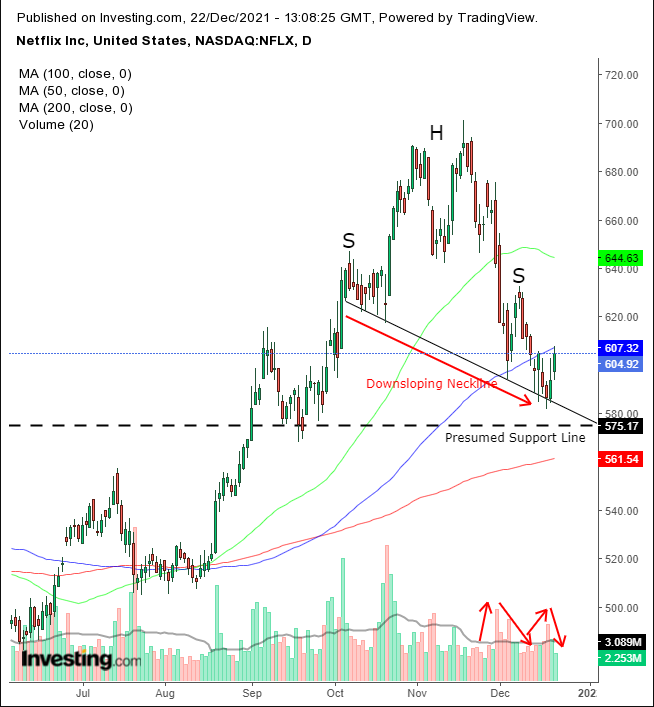Amid the ongoing Omicron scare, shares of Netflix (NASDAQ:NFLX) got sucked into a broad growth stock selloff. NFLX shed 12.5% of its value, even after a two-day rebound.
Because of the selloff, the streaming giant's stock is now seeing its worst monthly performance since September 2019. It's also now the laggard among FAANG peers.
That surprises us. The depreciation of shares issued by a company whose primary business is consumption of content from home as renewed lockdown fears loom is contradictory.
We would, therefore, be inclined to chalk up the losses to profit-taking. Then again, as of Friday, the stock is down almost 15%. That seems to be about more than just mere profit-taking.
Still, traders saw a 42.6% gain between May 12 and Nov. 18. Not too shabby for sitting on stock for six months. For comparison, among the FAANGs, the most Meta Platforms aka Facebook (NASDAQ:FB) shareholders made during that period was 27.1%, between the same starting date and Sept. 1. Now, FB is just +11.2% higher. Amazon (NASDAQ:AMZN) is only 5.7% higher now than it was on May 12.
Only Alphabet (NASDAQ:GOOGL) and Apple (NASDAQ:AAPL) have gained as much or more than Netflix during the same period.
As well, analysts are bullish on the company for fundamental and technical reasons, but we remain cautious. In our view, based on the technical chart, the stock may be about to plummet even further.

There is a presumed support at $575, a resistance line since July that was broken in August and confirmed in September, just as the analyst in the above link asserts. We agree.
However, in our estimation the stock is forming a down-sloping H&S top. This pattern is so weak it couldn't even create a proper right shoulder.
While that does, indeed, sound bearish, the added disadvantage is that it's challenging to know when the pattern is complete, as it's falling. What makes it more tricky when the price is on the decline is to know if it will remain within the pattern or when it might clear it.
Note that the price spiked with each drop and dried up with each rise, showing where participation lies.
The price sharply sliced through the 50 DMA, then proceeded to cross below the 100 DMA. The price found resistance at that point, retreating after touching it on Tuesday, even amid a rally.
Beneath that, at $575, is our presumed support line.
So, how can a trader know when the pattern is complete if it's dependent upon violating a price neckline that keeps falling? In our estimation, the $575 presumed support will probably be the decisive technical milestone that flags a top.
Also, the 200 DMA came up to it, underscoring this price level's significance.
Trading Strategies
Conservative traders should wait for the price to fall below the 200 DMA, then rise and find resistance by it.
Moderate traders would be content with a penetration of the $575 support.
Aggressive traders could go short now, provided they accept the higher risk of moving before everyone else for those higher gains. Money management is crucial. Here's an example showcasing the salient points of a coherent plan:
Trade Sample
- Entry: $605
- Stop-Loss: $610
- Risk: $5
- Target: $575
- Reward: $30
- Risk-Reward Ratio: 1:6
